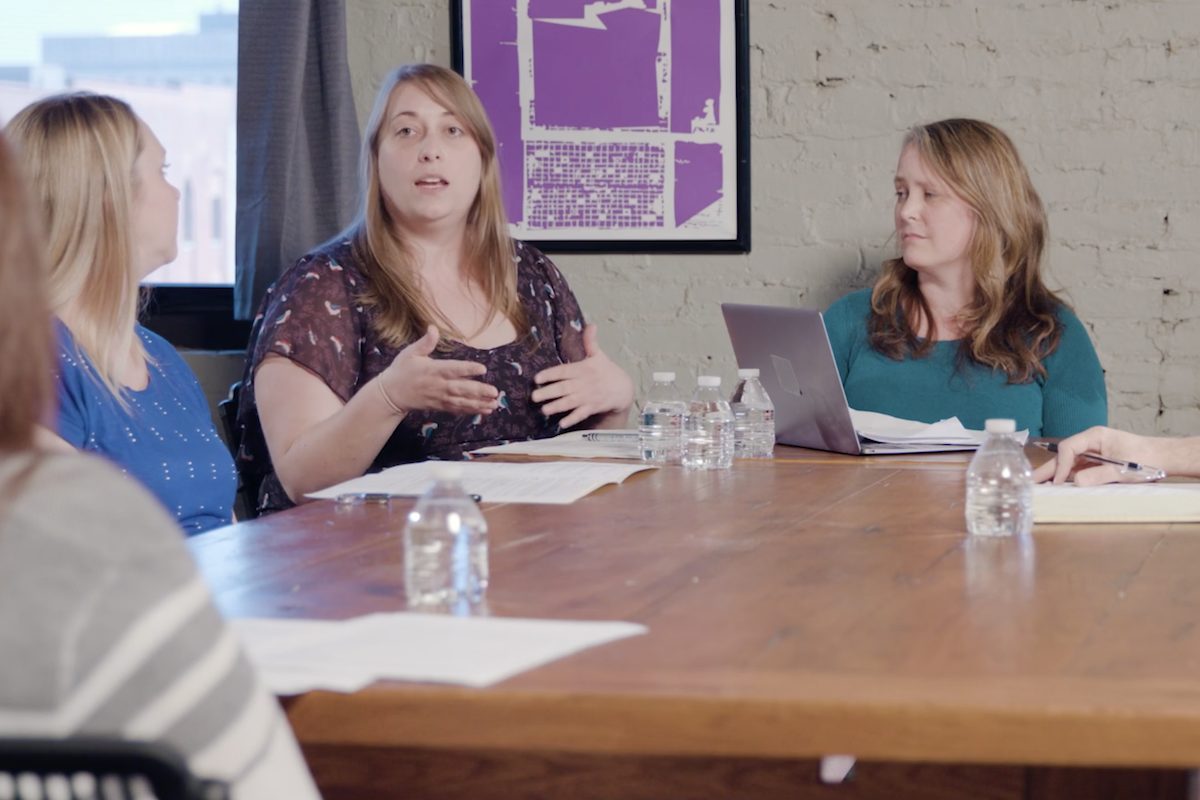SafeSide for Youth Services
A common language and consistent approach for staff in diverse service environments, whatever their previous experience level
How can you keep employees with diverse roles, settings, and experience levels on the same page?
Home-based services. Clinical programs. Service integration. School support... Youth services organizations serve clients with a lot of risks, yet many staff have no behavioral health background and limited access to back-up.
Lack of training can lead to inadequate assessment and response and/or unnecessary (and potentially harmful) emergency referrals.
Providing organization-wide training is challenging:
- Most suicide prevention programs target clinical staff and don't provide examples that school and community-based staff can relate to.
- In-person training is nearly impossible to achieve due to geographic spread and the need to cover services that don't close.
Every staff person in your organization needs to be equipped for their critical role in protecting young lives. The youth and families you serve deserve a staff that is trained, supported, and confident.
SafeSide provides a systematic framework and a scalable training option to equip your entire organization or region.

Framework
Connect, Assess, Respond, Extend
SafeSide for Youth Services unites clinical, school, and community staff with a common language and framework. Although roles and responsibilities are different, everyone gains an understanding of the four core tasks of suicide prevention: Connect - Assess - Respond - Extend.

Better Together
Clinical and Lived Experience
Co-taught by pediatric psychologist and family therapist, Dr. Tony Pisani and a suicide attempt survivor, Kristina Mossgraber, the framework comes to life in video-based teaching from these two perspectives and skill demonstrations by real youth services workers.

InPlace® Learning
Scalable, Sustainable Workforce Education
Without travel or hassle, teams work together through four (4) hours of video-guided learning––all at once or in briefer segments. Clinicians who formulate risk complete an additional hour of specialized learning.
All staff take away tactics, tips, and wording they can use immediately...then continue learning and contributing through optional monthly video calls and new modules added throughout the year.
New staff and trainees onboard any time.
A subscription provides year round access to video-based learning and interaction with experts.
Subscription Benefits
Video-Based Instruction and Demonstration
Learn a systematic framework for youth suicide prevention, then practice skills and strategies modeled by real clinical and community staff with youth actors.
4-hours of video-guided learning for the whole team. Clinicians who formulate risk complete an additional hour.
Virtual Office Hours
Interact with Dr. Pisani, the SafeSide team, and other subscribers in brief monthly Q&A video calls.
Anyone on your leadership or service teams can ask questions, request feedback, and share experiences with others around the world who are applying the same framework in their practices.
Tools & Refreshers
Stay current with evolving best practices, regulations, and research in youth suicide prevention.
We update video-based instruction and release new tools, templates, and quick refreshers throughout the year.

SKILL DEMONSTRATION
Asking Clearly and Directly
A school liaison builds trust while assessing an adolescent who has said she wants to kill herself over pictures her ex-boyfriend is texting to her friends.

SKILL DEMONSTRATION
Assess, Organize, Consult
Staff member assesses an adolescent who has written a letter stating that he wants to “off” himself. The staff member organizes what he knows about the adolescent, using the SafeSide Framework, and then calls the supervisor on call to relay information and start planning for safety.

SKILL DEMONSTRATION
Using the Framework to Guide Planning
The clinical team at a school milieu program uses the SafeSide Framework to discuss and make plans to follow up with a student who said over the weekend that he wanted to slit his wrists.
Simple Pricing Guide
How It Works
- Pay a one-time set-up fee to get training and evaluation material configured for your organization or region.
- Once set up, there is an annual subscription fee based on the number of employees who provide services or interact with youth in your organization or region.
Optionally add 3 AMA Category 1 CME credits at $15 per recipient.
International subscribers: SafeSide accepts payment in USD, AUD, NZD.
Subscription Benefits
Learning program and resource library configured for your organization, ready to deploy. Coaching with SafeSide team to support your rollout plans
Year-round access to video-based curriculum
Monthly office hours with Dr. Pisani, his team, and colleagues around the world
Updates, new modules, and refreshers
Current Pricing
$2000 USD ($3000 AUD) per site - One-time fee for configuration, set up, and launch support
$50 USD ($75 AUD) per youth services employee/contractor in your organization or region - Annual subscription
SafeSide Youth Services Learning Objectives
Connect
You know how to connect with you. But when suicidal thoughts come up, it’s easy to lose that connection in an effort to assess and respond to risk. We show you how to:
- Ask clearly and directly about suicide, conveying an understanding that what a person considering suicide really wants is to alleviate pain and suffering.
- Express your desire to collaborate with a suicidal person to alleviate that pain and be a partner in their recovery.
- Stick with a person through to recovery, including engaging other helpers and supports.
Assess
Information about past, recent, and current suicidal thoughts and behavior is essential, but not sufficient. Patient-specific plans and decisions are based on additional information. We describe how you can:
- Use a consistent structure for gathering information and communicating with colleagues, the people you serve, and their supports.
- Develop an actionable assessment of risk, anchored in the context of the setting where a person is being assessed and their history over time.
Respond
You’ve connected and assessed. Now you need to act. You want to go home feeling that you’ve done everything reasonably possible. We offer four categories to consider:
- Address the drivers of suicide risk through treatments and “mini-interventions” taken from more involved interventions.
- Develop contingency and safety plans, including a plan to reduce access to lethal means.
- Create plans to increase contact to support the person in the least restrictive environment possible.
- Consult with team members and make referrals to address unmet needs.
Extend
Your initial responses can be extended for greater impact on the person’s life:
- Create a system for non-demand, “caring contacts” after care transitions.
- Establish clear roles for family and other supports.
- Ensure regular, structured follow-up assessments and support.
- Employ the art of the suicide-related warm handoff within and outside the organization or program.
